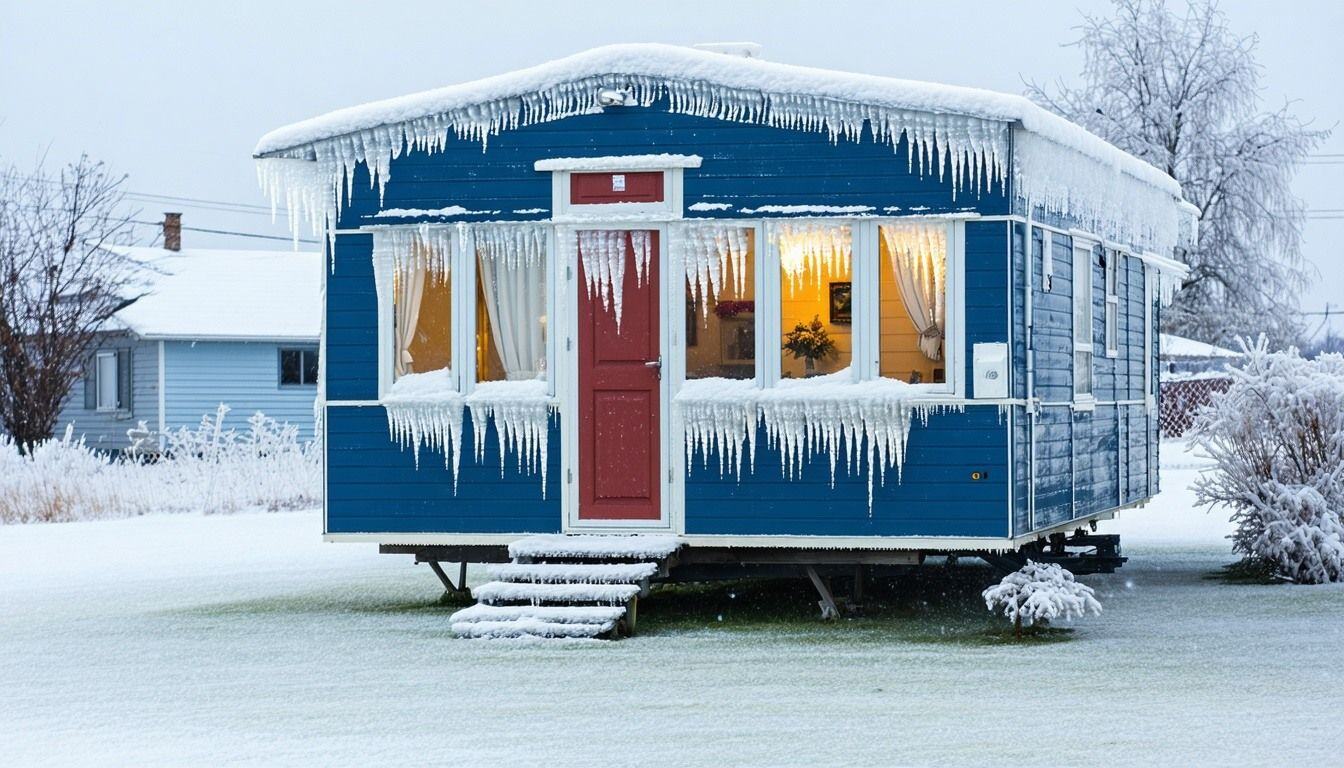Mobile Home Insulation Problems: Four Issues to Avoid


Planning for the worst-case scenario when you’re considering insulation for your mobile home can put you ahead of the game.
The last thing you want to happen is mold and mildew issues when your goal was to try and make your mobile home more comfortable. Those are just the tip of the iceberg of problems you will face if there are problems with your insulation.
RetroFoam of Michigan has more than a decade of experience insulating mobile homes across the lower peninsula. In this time, we have worked to help homeowners with little to no insulation or inadequate insulation solve their problems while making their mobile homes more comfortable and energy efficient.
We strive to provide homeowners the information they need to make informed decisions regarding their insulation needs. In this continued effort we have compiled a list of the most common mobile home insulation problems and how to fix them.
Mobile Home Insulation Problems
- Paneling can be pushed out by the injection foam. It doesn’t happen very often but paneling that isn’t structurally sound and is just stapled to the studs can be pushed out by the injection foam.
Solution: A good contractor and experienced installer will take their time and ensure this is avoided. In some cases, a member of the installation crew will stand by inside to let the installer outside know if the paneling begins to push out. - Moisture under the floor. If there is fiberglass under the floor of your mobile home, there is likely mold and mildew as well. Fiberglass insulation will retain that moisture which promotes mold growth, not to mention any wood rot from the moisture being held against the flooring. This moisture comes from the cold outside air connecting with the warmer air under your mobile home. This leads to condensation, moisture, and mold growth.
Solution: This is a case where spray foam insulation around the skirting is the best answer. The spray foam creates an air barrier that will help keep that cooler air out. Foam insulation also doesn’t promote the growth of mold and mildew. - Fiberglass will sag over time. Fiberglass doesn’t have the longest life span. As early as 15 years after it has been installed it may need to be replaced. If the material comes in contact with moisture it cuts down its insulating capabilities drastically and sag.
Solution: Foam insulation, whether in the walls, the ceiling, or around the skirting, will never have to be replaced. This is the case even if the foam comes in contact with water. - Pests want into your mobile home. And fiberglass makes the perfect place for them to nest. The material also doesn’t serve as a deterrent to pests, allowing them access to your home.
Solution: While foam insulation won’t keep them out if they are determined to get in, it also isn’t inviting them to nest. Foam insulation will create an air barrier by filling the nooks and crannies, making more difficult for those critters to get inside. It’s important to note, if you have a pest problem, you should hire an exterminator to give them the boot before you have foam insulation installed.
Avoid the Headache by Hiring an Experienced Insulation Contractor
When you hire an insulation contractor to insulate your mobile home, it’s important to make sure they are experienced and that they have your back with the proper licensing and insurance. RetroFoam of Michigan has those bases covered, and we even offer a lifetime warranty not only our products, but our workmanship as well.
If you’d like to schedule a free estimate and you live in Michigan’s lower peninsula, give us a call at 866-900-3626 or fill out the form on our website.
About Amanda Ringler
Amanda previously has worked as a breaking news and crime reporter, TV news producer, and editor in Flint and Detroit. Throughout her career as a journalist, she has won several awards from The Society of Professional Journalists - Detroit Chapter and the Michigan Press Association. As part of the RetroFoam of Michigan family, Amanda uses her experience as a journalist to write content that will help educate homeowners on the benefits of foam insulation. When Amanda isn’t writing, she’s spending time with her husband and rescued huskies. She also loves knitting, making art, cooking, and hosting dinner and a movie night for friends and family.

.jpg)
